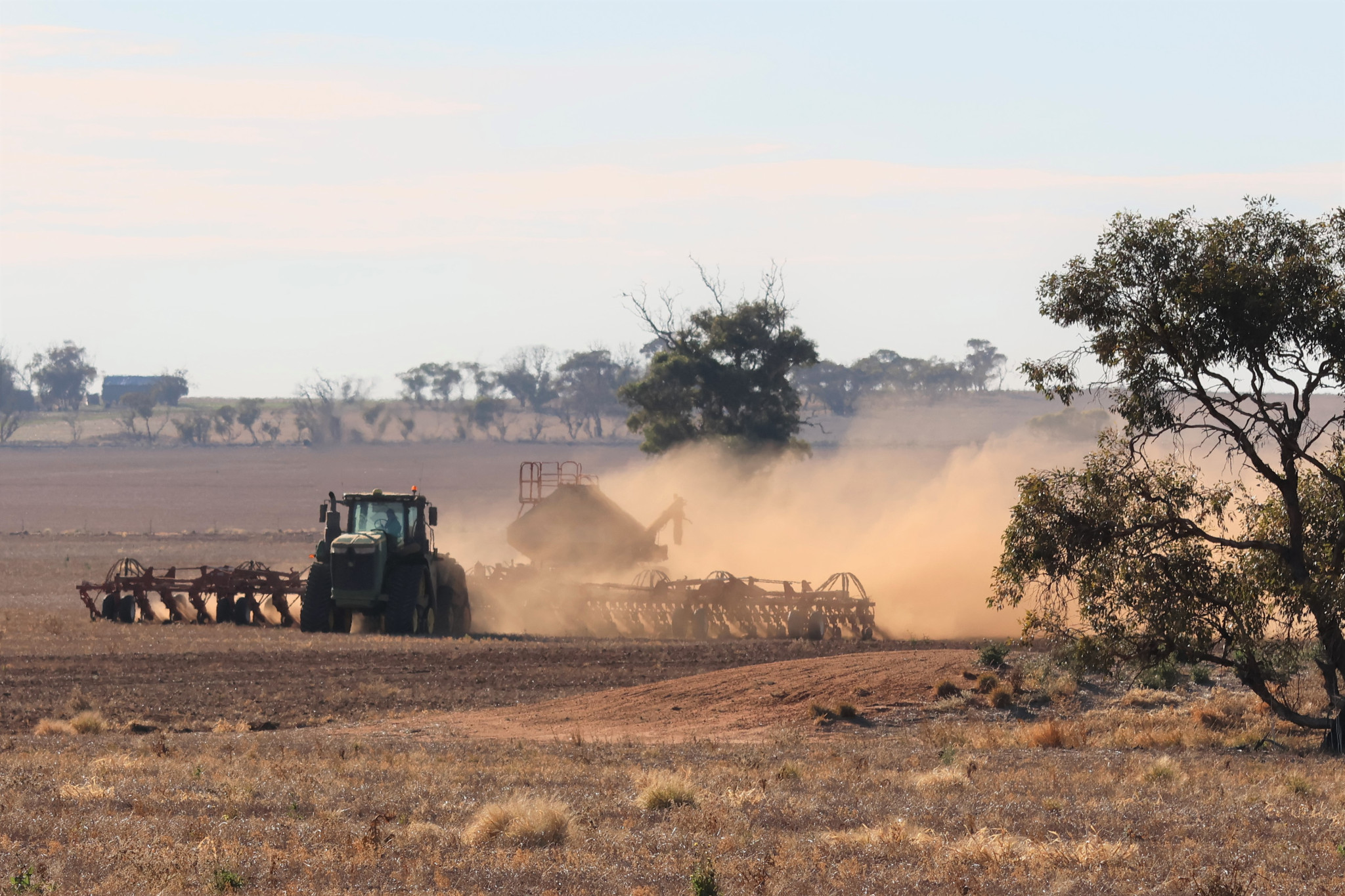Rural
29 May, 2024
'The sow must go on', growers say
In winter-like temperatures but without the accompanying rain, farmers around Rainbow are dry-sowing as they wait for the arrival of the autumn break.

Like their counterparts across the Wimmera Mallee, producers at Rainbow say they are pinning their hopes on the soil moisture that remains as they move ahead with putting crops into the ground.
It's a similar story not only locally but Australia-wide as far as the temperate zone is concerned as the rainless conditions stretch right across the southern mainland states.
Grain Producers Australia (GPA) chair Barry Large says farmers in areas such as western Victoria who are seeding dry "could do with the confidence boost before the end of May".
Mr Large said many canola growers were "reducing their canola plantings as they continue to wait for a proper season break in the absence of any rain".
"The longer growing season required by canola [and] the lack of rain has many returning or storing seed and increasing cereal plantings," he said.
Despite the unseasonably dry autumn to date, Victorian grain growers were feeling “positive” for the season ahead, Victorian Farmers Federation grains commitee chair and Berriwillock grower Craig Henderson said.
“There is a good profile across most of Victoria and for a majority of us seeding is well on the way,” Mr Henderson said.
However, dry-sowing is not without its drawbacks, Independent Consultants Australia Network member Mark Congreve warns.
"Growers planting their winter crops into relatively dry soils have every reason to be concerned about the effectiveness of their pre-emergent herbicide applications," Mr Congreve said.
“The first consideration is whether sufficient rain has fallen to eliminate any carry-over effect from previously applied herbicides with residual activity.
"All herbicides will persist in the soil if there is insufficient soil moisture to allow microbial breakdown of the herbicide.
“Follow the instructions on the herbicide label and consider how many weeks the topsoil - down to 10cm - was actually moist over last spring and summer, as this can often be more important than just looking at total rainfall amount.”
Mr Congreve said if the risk of carry-over effects was low or the following crop was not sensitive to the herbicide mode of action, the next step was to weigh up the best options for managing early weed growth and ensuring crop safety at planting.
“Some pre-emergent herbicides, such as Boxer Gold, Overwatch Herbicide or Group 14 herbicides, may improve knockdown efficacy when applied in a tank mix with paraquat as part of a double-knock tactic," he said.
“But, setting up the sprayer for high coverage with paraquat will result in high levels of stubble interception, increasing the potential for some pre-emergent herbicides to bind to the stubble.
"Also, the green leaf material will take up pre-emergent herbicide deposited on the weeds.
"Losses to stubble binding or green leaf uptake mean less pre-emergent herbicide reaching the soil and therefore shorter length of persistence.”
He said growers sowing into high stubble loads should choose "mobile" herbicides so that most of the product would wash off and reach the soil surface one rain did fall.
“In lower stubble situations, the behaviour of the herbicide in the soil becomes the key consideration,” he said.
“Very mobile herbicides can be difficult to keep away from the crop seed furrow, particularly where the herbicide has been applied ‘dry’, the soil type is lighter and hence there are large soil pores, and the initial rainfall after application is significant.
"This scenario can increase the risk of crop injury."
Mr Congreve said farmers who chose to burn stubble before seeding to reduce stubble tie-up should wait for the ash to be blown away or washed into the soil before applying pre-emergent products.